在杭州玉古路上的“你我茶燕”茶馆,浙江旅游科学研究所研究员、杭州老房子研究专家仲向平邀来友人,为一座山,也为一本书而聚。山是莫干山,书是《莫干山》。
笔者手中的这本《莫干山》,已经不是几年前出版的《莫干山》。
2015年,仲向平、叶全新、刘建林三位作者,以众筹的方式完成了这本书。四年过去,许多人来到莫干山,并带走了这本书,让文字写就的“山”,也开始了一段旅程。
令三位作者没想到的是,近日,《莫干山》竟得以再版。再版的《莫干山》,“增加了一些足以让人惊叹的地理信息,环莫干山区域,一些原生态的的乡村文化小镇,正在为更多人带来优美自然的未来生活。”
这座山,一直保有它的秀美,又一直在变化。
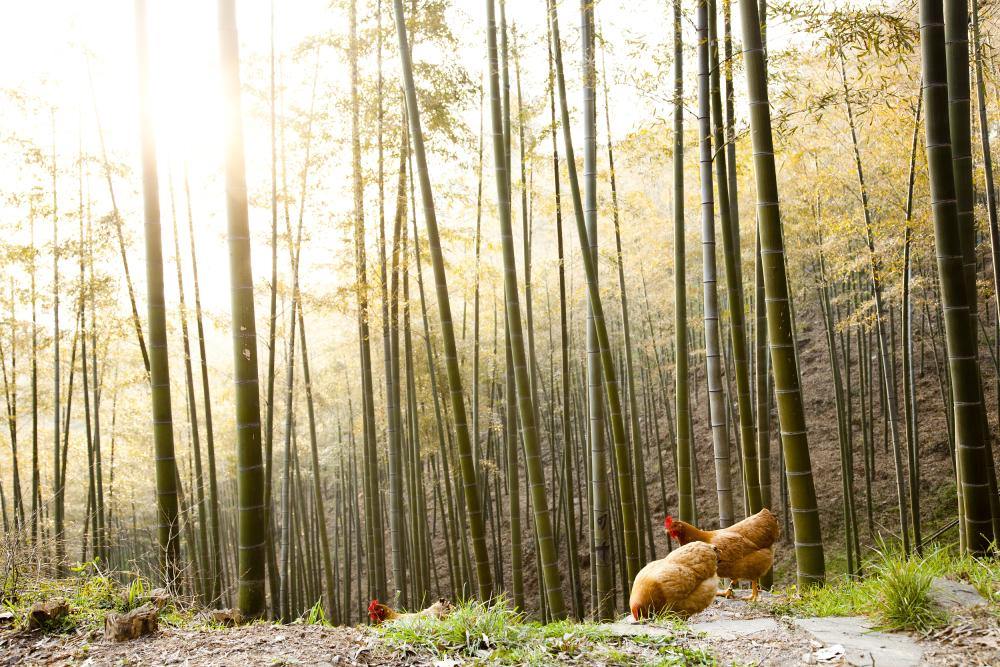
佛利甲和浙北“克莱阿山”
仲向平脑海中的杭州地图很特别。
50年前、100年前、200年前,乃至更远,他总能清楚地将“彼时”的杭州筛选出来。比如,2018年8月间,与浙医二院仅有一条清吟街之隔的浙大一院开了一家书店:晓风·鹤庐书斋。这里是清末浙江四大藏书楼八千卷楼的所在地,它的主人丁丙、丁申兄弟在此演绎无数与书有关的悲欢离合。那天,仲向平也在,他画了100多年前此处占地100多亩地的主要建筑的分布草图,详细到一口井的位置。
当他和叶全新、刘建林去写一本《莫干山》,也是如此。一处处风光、一座座别墅、一个个人物、一段段历史……还有,莫干山的当下,那些民宿、美食,以及生活在其间的年轻人。
自百余年前至今,为什么莫干山总能让陌生人以此为家?要知道答案,只有向山而行。
《莫干山》的写作者,几乎抚遍了莫干山的山川草木、人文历史,但又不限于此。
梅藤更、张静江、蒋介石、丁玲、马占山、杜月笙……莫干山的山风吹进书中,夹带着时代的巨变。
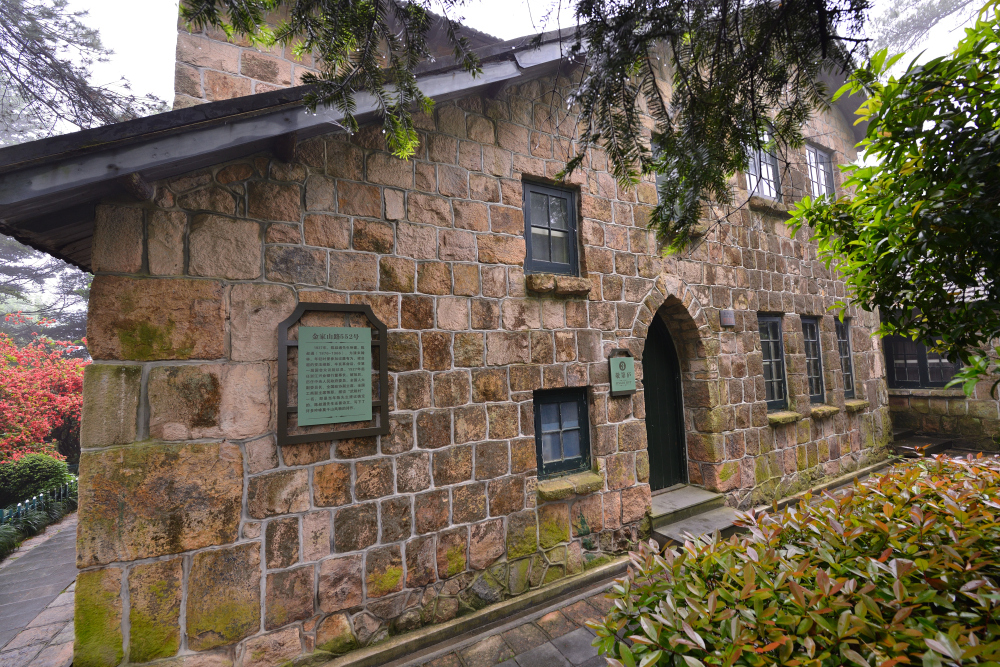
对了,还有那名美国传教士佛利甲。
大约130年前,在上海工作的佛利甲遇上了湖州莫干山。
关于佛利甲那段经历的细节,后来的我们只能在拼凑的字句之间去想象——
或许,那是一个夏天,佛利甲沿河而行,慢慢靠近浙江北部的一座山。山脚下的庾村,那时就叫庾村,因为南北朝时著名文学家庾信的家族一直居住在这里。
佛利甲几乎是宿命般地踏进了这座莫干山脚下的小村,他必定是操着山民无法明白的语言,但从他的比划中,村人知道,来到这座山下的陌生人,无一不是想探寻山中的秘境。
于是,善意的山民把佛利甲带到丛林中间,一条樵夫登山的小路,摆在佛利甲的面前。
几个小时后,佛利甲站在炮台山上,那是莫干山东面进山门口的制高点,也是山民出入的必经之地。
“浙江北部湖州县有一座莫干山……在过去的11年中,那些吃苦耐劳的传教士时不时向中国居民租用在东南坡半山腰上的房间……”1898年7月20日,公开发行的《字林西报》曾刊登了这样的文字。
如果佛利甲是第一个遇上莫干山的外国传教士,那么他上山的时间应该是1887年。
当佛利甲回到上海,也把莫干山的风带到了这座国际大都市。他当然未曾想到,此后的100多年里,“草莱未辟,登山不易”的莫干山,会迎来另一个时代。
1887年,从莫干山返回上海的佛利甲说,浙北“有一座克莱阿山”,克莱阿——翻译成中文则是位美丽女子的名字。
除了克莱阿,不知道佛利甲用怎样的词语向他的同事描述这座山,反正,十九世纪90年代,更多的传教士来到莫干山。佛利甲寻一座山避暑的愿望,开始在其他人身上实现。
纷至沓来的后来者,向当地山民租赁房屋长居,并将山中见闻写成文字发往世界:“中国克莱阿山”“莫干山天然消夏湾”“东方的托斯卡纳”……这样的字眼,出现在许多外文报刊上。
梅藤更和莫干山1号
再读一读《莫干山》里那位英国籍医师梅藤更先生的故事吧。
梅藤更,杭州人并不陌生。
解放路88号,浙江大学医学院附属第二医院(以下简称浙医二院)开放式的门口,有一组著名的雕像——一位戴礼帽的外国医生,一位小患者,他们互相鞠躬。这位外国医生,就是一个多世纪以前任杭州广济医院院长的梅藤更。
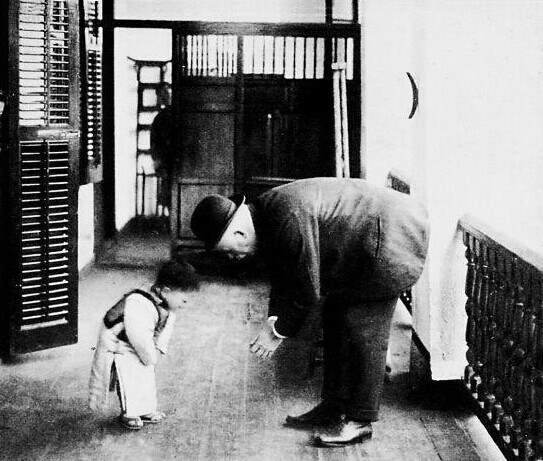
创建于1869年的浙医二院(前身为英国圣公会设立的杭州广济医院),在20世纪初被国内外同行誉为“远东最好的医院”。所谓“最好”,在硬件和医术之外,还有医患关系的和谐。
2019年,浙医二院迎来建院150周年。从广济医院的“济人寿世”,不断发扬凝练成为今日的“患者与服务对象至上”,其核心是一脉相承的价值取向。那么,有关梅藤更的故事,就值得一读再读。
1881年11月,梅藤更和19岁的妻子佛罗伦斯·南丁格尔·史密斯——一位出身于名门望族的女护士走进了杭州城,在此生活、工作了45年。
“当年开设不久的广济医院简陋之极:没有自来水、没有电、没有药房、没有手术室。到1926年梅藤更退休离任时,史料记载广济医院有500张病床、三个手术室、住院病人4000例左右,是全国最大的西医医院之一。”《莫干山》里写下的数据背后是梅藤更倾注的用心。
梅藤更没有将他的医术囿于当时杭州城东的广济医院,因为,他走进了莫干山。
到1910年,梅藤更夫妇已经在杭州居住了29年,这一年,他们在莫干山建造了炮台山别墅。当年,55岁的梅藤更向山民购买了莫干山西南角炮台山75亩地,在山顶建造了一栋古堡式洋房。这里是莫干山1号。
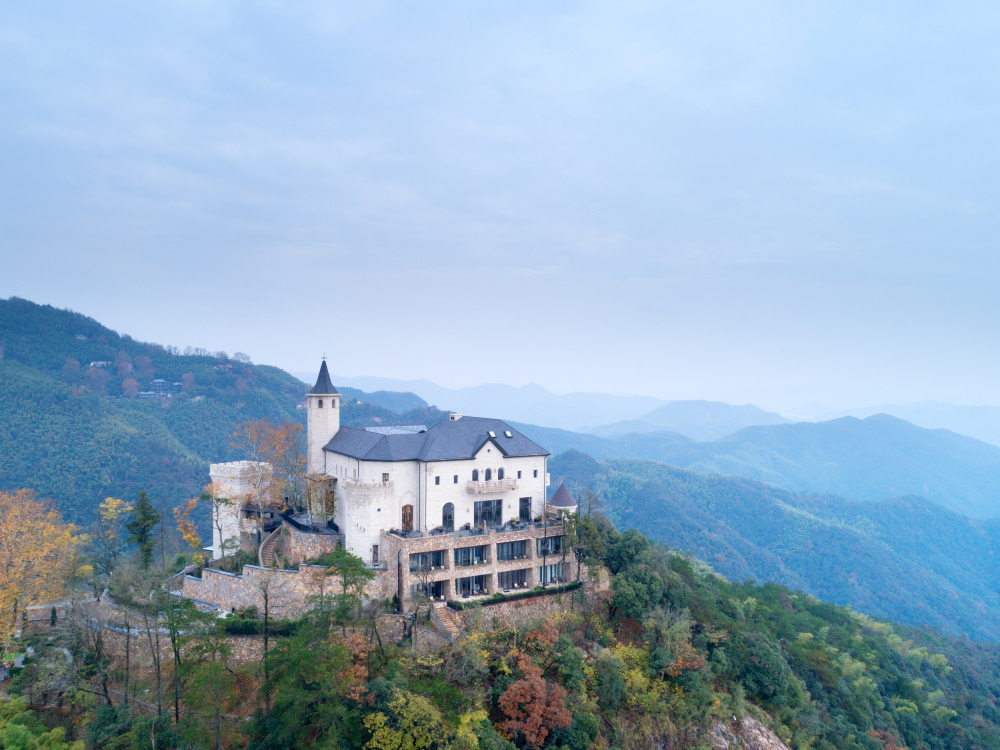
仲向平说,缺少维修的古堡可能毁于二十世纪60年代的台风。如今,它只剩门柱和裙墙……
端午上山,中秋下山,梅藤更夫妇在这里度过了相对轻松的晚年时光。住进古堡的第一个夏天,南丁格尔想写信告诉英国的亲友,他们夫妻俩遇上一座山的欢欣。
可是,亲友的回信寄到哪里呢?
“这里就是莫干山1号啊!”
这在当时不过是梅藤更的一个玩笑,但,莫干山1号诞生了。
那时的莫干山,除了好山好水,还有贫病的山民。梅藤更眼见他们困于病痛不能坐视不理,他决定在莫干山开设临时医院,利用度假的时间,为病患服务。1924年夏天,广济医院莫干山临时医院开张。
梅藤更有一个专门的信差,往返炮台山和三桥埠十几公里寄信、收信,这也是莫干山1号由一个随便叫叫的名字,而成为实实在在的莫干山1号的原因之一。信差还有一个特别的任务,每次梅藤更上山,他都敲一面铜锣,飞奔于山野之间,百姓以此为信号,从四面八方赶到古堡看病,大家都知道,梅先生看病不收钱。
那面珍贵的铜锣还在。仲向平说,莫干山1号的第三任看房人褚庆仁的后人仍然保留着它,还包括梅藤更用过的旧物——一盏台灯、一把小茶壶。
1934年8月30日,梅藤更去世,他最后的头衔是苏格兰皇家地理学会名誉副主席。
梅藤更的故事,一直在杭州被讲述,而且随着史料的丰富,有愈加丰满的细节。
Mount Mogan and Some Foreigners
Mount Mogan, a unique mountain 60 kilometers from the provincial capital city Hangzhou of Zhejiang and 200 kilometers from Shanghai. It is unique not because the mountain boasts bamboo forests and bubbling streams. Known for its cool temperatures during the region’s scorching summers, mountain has been a summer resort, first favored by the Shanghai elite such as missionaries, businessmen, customs officials and their families in the 1880s. By 1910 approximately 300 foreigners, mostly Americans and British, had set up summer homes on the hill. A lot of villas and houses they built still stand today. Some are hotels and guesthouses.
In 2015, Zhong Xiangping, Ye Quanxin and Liu Jianlin published a book titled Mount Mogan with the funds raised through crowdfunding online. Over the past four years, the book sold so well that it was reprinted in 2018. The new edition includes some new information on the geographic features in the area encircling the mountain and some villages and towns in the mountain area where ecology is well kept. Even the trio had not expected that the book has sold so well.
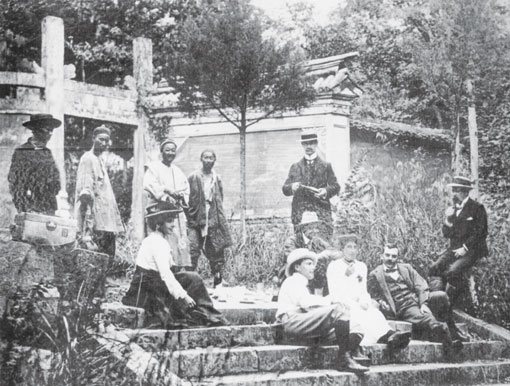
It was no accident that the three authors collaborated in writing the book. Zhong Xiangping is a walking encyclopedia of the history and historical architecture of Hangzhou and surrounding areas. You name a time in Hangzhou, say fifty years ago, 100 years ago, or 200 years ago, and he can draw you a map telling you how the city looked back then. Ye Quanxin is a female writer from neighboring Anhui Province and now based in Hangzhou while Liu Jianlin, not a native of Mogan, has been working for the mountain’s administration for years.
The team did a thorough field study of the mount and the mount opened up to them. From the 1880s on, the mountain provided a convenient breakaway shelter in summer for people in Shanghai. Since the first buildup of houses and villas there, the mount has been under the direct jurisdiction of the provincial government though it is located in Deqing County north of Hangzhou. Chiang Kai-shek, Zhang Jingjiang, Ding Ling, Ma Zhanshan, and Du Yuesheng, all big names in the Republic years, stayed in the mount in summer times.
According to the authors of the book, American Baptist Church missionary surnamed Frigg based in Shanghai was the first international who discovered Mount Mogan. When the missionary stumbled upon the Shangri-La beauty and quiet coolness of Mogan in 1887, the mount was just one of many similar mountains in Zhejiang. With some local villagers as his guide, he explored the mountain. Back in the metropolis, he told the mountain story to other missionaries and the word began to spread. More and more missionaries came to summer in the mount. Gradually, more and more reports appeared in English newspapers aimed at international readers in Shanghai in particular and in China in general. The English-language newspaper North China Daily News, the most influential foreign newspaper of its time in China, mentioned on July 20, 1898 that the missionaries had frequently rented houses from Chinese residents for summer stays in Mount Mogan in Huzhou County in northern Zhejiang over the past 11 years.
One of the foreigners who set up his summer home in Mount Mogan is Doctor David Duncan Main (1856-1934), a British doctor best known for his medical missionary work in Hangzhou for decades from 1881 and 1927. Today, a statue stands in front of the Second Affiliated Hospital of Zhejiang University, which he first founded, honors his unique contribution to the medical practice and education in Hangzhou.
Doctor Main and his 19-year-old wife Florence Nightingale Smith arrived in Hangzhou in November 1881. They spent 45 years in Hangzhou, working and living. When they arrived, the hospital was small: there was no running water, no electricity, no pharmacy, and no operating room. When he retired in 1926, the hospital had 500 beds and three operating rooms and took care of 4,000 inpatients a year. It was one of the biggest Western hospitals in China then.
In 1910, the 55-year-old Doctor Main bought a land at the Gun Fortress Hill in the southwest of Mount Mogan and had a western villa built on the top of the hill which looked like an ancient fortress. The couple spent their first summer at their fortress house on the top of the hill and the wife wrote a letter to his relatives in Britain. She wondered what the address was. The doctor suggested that it be number 1 Mount Mogan. So the address got born and became official. He had a messenger who traveled between the residence and Three Bridges, a village more than 10 kilometers away to send and receive letters. The messenger had a special task to perform whenever the doctor came to Mount Mogan. The messenger sounded a copper gong loudly, announcing the doctor’s presence in the mountain to all the villagers in neighborhood. Hearing the message, villagers came to see the doctor free of charge.
Zhong Xiangping says that the residence was damaged in a typhoon in the 1960s. Only a wall and a door post remain today. But the copper gong is still in the possession of a descendent of Zhu Qiren, who was the third housekeeper of the residence. Also in the precious collection of Dr. Main’s objects is a desktop lamp and a small teakettle.
